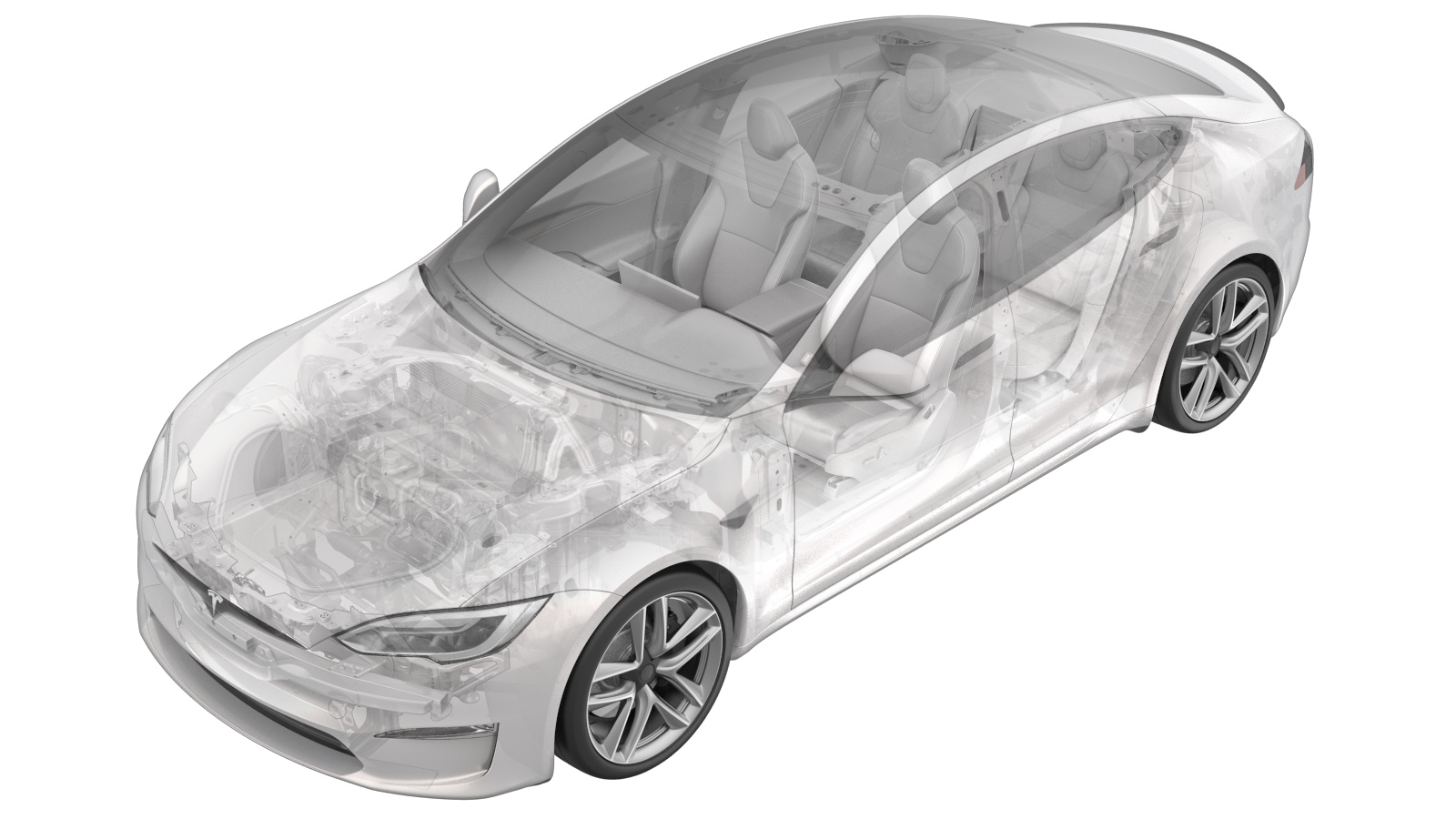Charge Port (NACS) (Remove and Replace)
 Correction code
44011602
0.54
NOTE: Unless otherwise explicitly
stated in the procedure, the above correction code and FRT reflect all of the work
required to perform this procedure, including the linked procedures. Do not stack correction codes unless
explicitly told to do so.
NOTE: See Flat Rate Times to learn
more about FRTs and how they are created. To provide feedback on FRT values, email ServiceManualFeedback@tesla.com.
NOTE: See Personal Protection to make sure proper PPE is worn when
performing the below
procedure.
Correction code
44011602
0.54
NOTE: Unless otherwise explicitly
stated in the procedure, the above correction code and FRT reflect all of the work
required to perform this procedure, including the linked procedures. Do not stack correction codes unless
explicitly told to do so.
NOTE: See Flat Rate Times to learn
more about FRTs and how they are created. To provide feedback on FRT values, email ServiceManualFeedback@tesla.com.
NOTE: See Personal Protection to make sure proper PPE is worn when
performing the below
procedure.
Only technicians who have been trained in High Voltage Awareness and have completed all required certification courses (if applicable) are permitted to perform this procedure. Proper personal protective equipment (PPE) and insulating HV gloves with a minimum rating of class 0 (1000V) must be worn at all times a high voltage cable, busbar, or fitting is handled. Refer to Tech Note TN-15-92-003, High Voltage Awareness Care Points
for additional glove and safety information.
Torque Specifications
| Description | Torque Value | Recommended Tools | Reuse/Replace | Notes |
|---|---|---|---|---|
| Bolts that attach the charge port assembly to the body |
 6 Nm (4.4 lbs-ft) |
|
Replace | |
| Nut that attaches the harness ground to the body |
 9 Nm (6.6 lbs-ft) |
|
Reuse | |
| Nuts that attach the charge port busbars to the charge port |
 9 Nm (6.6 lbs-ft) |
|
Reuse | |
| Bolt that attaches the safety cover to the charge port assembly |
 6 Nm (4.4 lbs-ft) |
|
Replace |
Remove
- Open the LH front door and lower the LH front window.
- Open the LH rear door.
-
Fold the LH 2nd row seatback to the
down position.
NoteIf the 2nd row seat cushion is not present, protect the seatback as required.
- Open the liftgate.
- Use the touchscreen to open the charge port door and the hood.
- Remove the rear underhood apron. See Underhood Apron - Rear (Remove and Replace).
- Disconnect LV power. See LV Power (Disconnect and Connect).
- Perform a charge port voltage check. See Charge Port Voltage Check.
- Remove the LH trunk side trim. See .Trim - Side - Trunk - LH (Remove and Replace).
- Remove the charge port to HV battery busbar safety cap. See Safety Cap - Busbar - Charge Port to HV Battery (Remove and Replace).
-
Remove the nuts (x2) that attach the
charge port busbars to the charge port, and then remove the busbar leads from the charge
port studs.
 9 Nm (6.6 lbs-ft)TIpUse of the following tool(s) is recommended:
9 Nm (6.6 lbs-ft)TIpUse of the following tool(s) is recommended:- 11 mm socket
NoteNuts have captured washers. -
Release the clip that attaches the
charge port manual release cable.
-
Remove the nut that attaches the
charge port harness ground to the body, and then release the ground from the body.
 9 Nm (6.6 lbs-ft)TIpUse of the following tool(s) is recommended:
9 Nm (6.6 lbs-ft)TIpUse of the following tool(s) is recommended:- 13 mm socket
-
Disconnect the electrical harness from
the charge port ECU connectors (x2).
-
Remove and discard the bolts (x4) that
attach the charge port assembly to the body, and then separate the charge port assembly
from the body.
 6 Nm (4.4 lbs-ft)TIpUse of the following tool(s) is recommended:
6 Nm (4.4 lbs-ft)TIpUse of the following tool(s) is recommended:- 10 mm socket
-
Release the locking tab, disconnect
the electrical harness from the charge port door connector, and then remove the charge
port door assembly from the vehicle.
-
If installed, cut the cable tie that
attaches the manual release cable to the charge port assembly.
-
Remove the manual release cable collar
from the charge port assembly.
-
Turn and slide the metal end of the
manual release cable out of the charge port actuator arm opening.
Install
- Perform a zero adjust of the Hioki resistance meter in preparation to measure resistances later in this procedure.
-
Slide and turn the metal end of the manual release cable into the charge port
actuator arm opening.
-
Install the manual release cable
collar into the charge port assembly.
-
If previously removed, install a new cable tie to attach the manual release cable to
the charge port assembly.
-
Bring the charge port door assembly to
the vehicle, connect the electrical harness to the charge port door connector, and then
fasten the locking tab.
-
Install the charge port assembly onto
the body.
NoteMake sure to route the electrical harness beneath the charge port, so that it is not pinched.
-
Install new bolts (x4) to attach the
charge port assembly to the body.
 6 Nm (4.4 lbs-ft)TIpUse of the following tool(s) is recommended:
6 Nm (4.4 lbs-ft)TIpUse of the following tool(s) is recommended:- 10 mm socket
NoteNew charge port has Penetrox pre-applied to HV joints. -
Connect the electrical harness to the
charge port ECU connectors (x2).
-
Install the charge port electrical
harness ground to the body, and then install the nut that attaches the harness ground to
the body.
 9 Nm (6.6 lbs-ft)TIpUse of the following tool(s) is recommended:
9 Nm (6.6 lbs-ft)TIpUse of the following tool(s) is recommended:- 13 mm socket
-
Fasten the clip that attaches the
charge port manual release cable.
-
Use an IPA wipe to clean residual
Penetrox from the charge port busbars' contact surface, and allow at least 1 minute to
dry.
-
Install the busbar leads to the charge
port studs, and then install the nuts (x2) that attach the charge port busbars to the
charge port.
 9 Nm (6.6 lbs-ft)TIpUse of the following tool(s) is recommended:
9 Nm (6.6 lbs-ft)TIpUse of the following tool(s) is recommended:- 11 mm socket
NoteIf excessive force is required to seat busbars, they may have been bent. Inspect for damage and replace if necessary. -
Inspect the HV insulating gloves for damage prior to use.
CAUTIONRefer to service document TN-15-92-003, for information on inspecting HV gloves.
-
Put on the HV insulating gloves and leather over gloves.
-
Perform Hioki resistance test at each HV joint from HV busbar lead to charge port
stud.
NoteThe acceptable resistance is between 0.050 mΩ and 0.270 mΩ. If the resistance is greater than 0.270 mΩ, stop work and escalate a Toolbox session. If the resistance is lower than 0.050 mΩ, reposition the probes and measure again. If the resistance is repeatedly between 0.00 mΩ and 0.050 mΩ, the resistance test has passed.
- Remove the leather glove protectors and HV insulating gloves.
- Install the charge port to HV battery busbar safety cap. See Safety Cap - Busbar - Charge Port to HV Battery (Remove and Replace).
- Install the LH trunk side trim. See .Trim - Side - Trunk - LH (Remove and Replace)
- Connect LV power. See LV Power (Disconnect and Connect).
- Install the rear underhood apron. See Underhood Apron - Rear (Remove and Replace).
- Close the hood and liftgate.
-
Verify that the vehicle charges properly, and then close the charge port door.
- Raise the LH front window, and then close the LH front door.